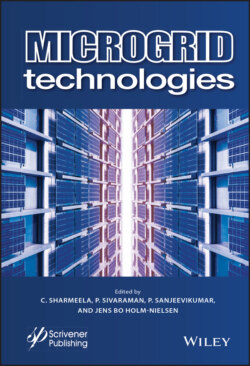Читать книгу Microgrid Technologies - Группа авторов - Страница 37
2.1 Introduction
ОглавлениеThe power system in the modern world is restructured based on source, nature of load and geographical space availability. The grid size also depends on the need of society and consumers. The concept of microgrid (MG) emerges from the traditional grid. But like the traditional grid, MG has a limited area to serve and hence the transmission lines could be replaced by underground cables. Depending on the application at the consumer end, MG could be with Alternating Current or with Direct Current or mixed one. Due to limited size, capacity and consumer base, power flow in MG could be a critical issue. For the interconnected AC transmission line network, transfer capacity is an economical operational constraint. It forces to use the available infrastructure to its maximum limit. The increased usability of the transmission limit handled by the FACTS controllers. These controllers are known for their applications in improving power transfer capacity as well as stability using the existing infrastructure of a transmission utility. In addition to transmission capacity enhancement and power flow control, FACTS controllers have other advantages like transient stability improvement, power oscillation damping, voltage stability and control. The transmission line capacity is enhanced by around 40 to 50% by installing a FACTS controller in comparison to conventional mechanically-driven devices, as FACTS controllers are not subject to wear and tear and require a lower maintenance [1].
